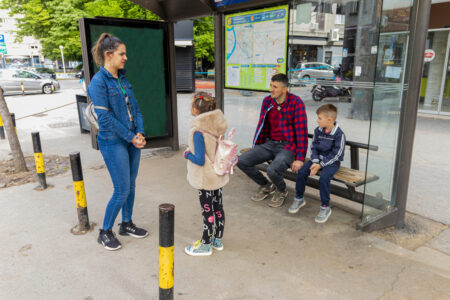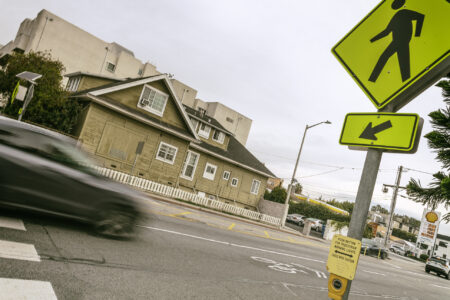
Share On Social!
This is part of the Salud America! The State of Latinos and Housing, Transportation, and Green Space: A Research Review »
Summary
Income-based fare reductions, improved scheduling, and transit routing improvements to link places of residence with places of employment are emerging ways to improve quality of life for Latinos living in the U.S.
To improve transit connectivity and safe transportation options in Latino communities, smart advocacy decisions will have to be made. Transit routing improvements will have to address coverage gaps in the suburbs, disconnects between population centers and job nodes, and alignment of routes between riders and destinations [42].
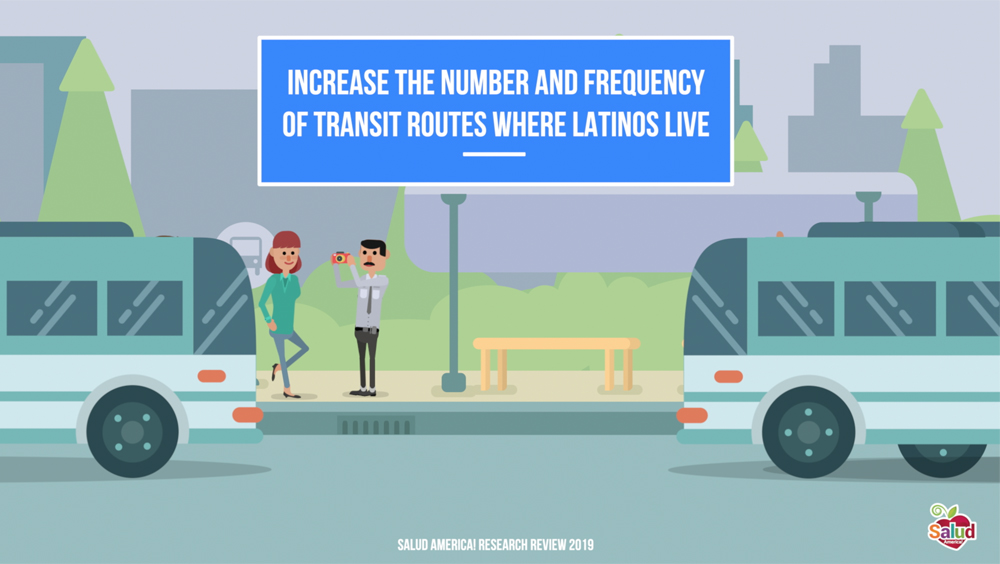 Transit scheduling improvements must be made to meet the working hour needs and reliability required for regular use [9, 41].
Transit scheduling improvements must be made to meet the working hour needs and reliability required for regular use [9, 41].
Assessment of true transit “affordability” will have to be measured, and a method to normalize transit cost based on income implemented [9, 41, 42]. Safety, both in the context of crime reduction near public transit and with regard to pedestrian and biker injury, must also be addressed [41].
Emerging Solutions to Meet Latinos’ Public Transit Needs
Public transport routes that are distributed where the highest proportion of low-income individuals reside. For example, Minneapolis City Council passed a capital spending resolution for street maintenance and safety improvements with a mandate to advance equity; 40% of projects funded through 2022 are in areas of concentrated poverty, which account for 23% of city streets [47].
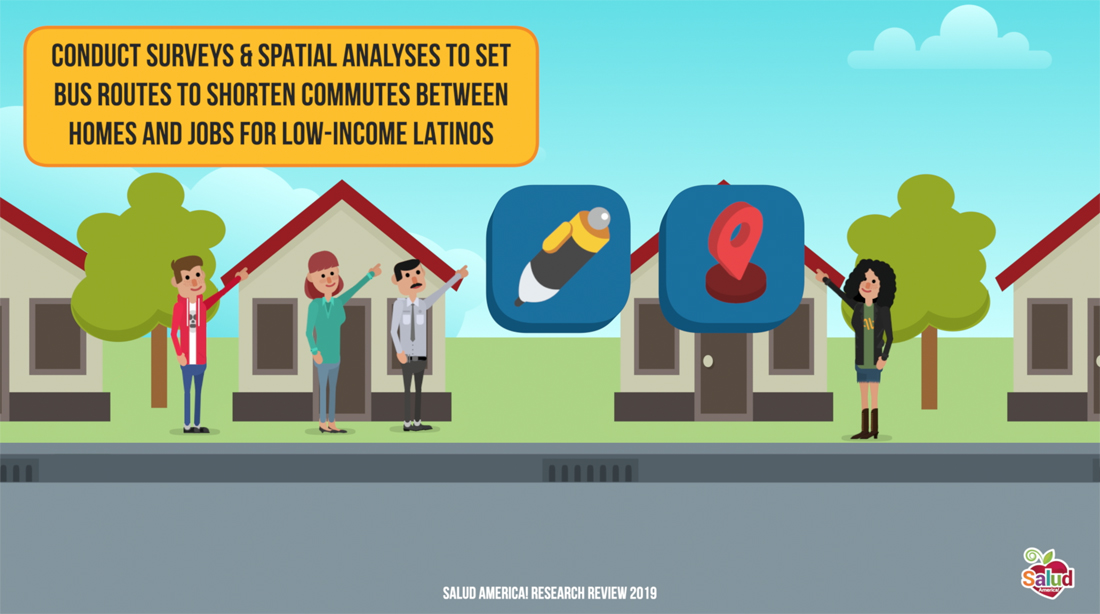 Community surveys and spatial analyses that are performed to determine how to establish public transport routes to shorten commute times between the majority of residential neighborhoods and places of employment for low-income Latinos. For example, in San Francisco, Calif. (15.3% Latino, to prevent and mitigate displacement in the Bay Area, the Metropolitan Transportation Commission commissioned researchers at UC Berkeley to develop the “Regional Early Warning System for Displacement” [47].
Community surveys and spatial analyses that are performed to determine how to establish public transport routes to shorten commute times between the majority of residential neighborhoods and places of employment for low-income Latinos. For example, in San Francisco, Calif. (15.3% Latino, to prevent and mitigate displacement in the Bay Area, the Metropolitan Transportation Commission commissioned researchers at UC Berkeley to develop the “Regional Early Warning System for Displacement” [47].
Assessments of transport affordability for low-income groups and establishment of reasonable prices as a percent of monthly income, payment options that spread periodic lump-sum costs over time, and conversion of daily payments into monthly passes. Making fares income-based, would go far to improve transit usability for low-income Latinos [41, 46].
One such example is already in use in the Alameda-Contra Costa transit district, where cash fares are automatically converted to day passes when using a regional Clipper fare card. Day passes are then automatically converted into monthly passes, which saves users money in the long run, and also important for low-income riders, eliminates the need to pay for a monthly pass up front [41]. Therefore, by simply promoting use of a transit card, transit authorities could help low-income riders save significant amounts of money and encourage sustained ridership.
Increased public awareness of transportation cost assistance programs offered by both public agencies and nonprofit organizations. Information supplied in grocery stores, children’s schools, as well as television and mobile device ads, not just on transit vehicles, and information supplied in Spanish and English.
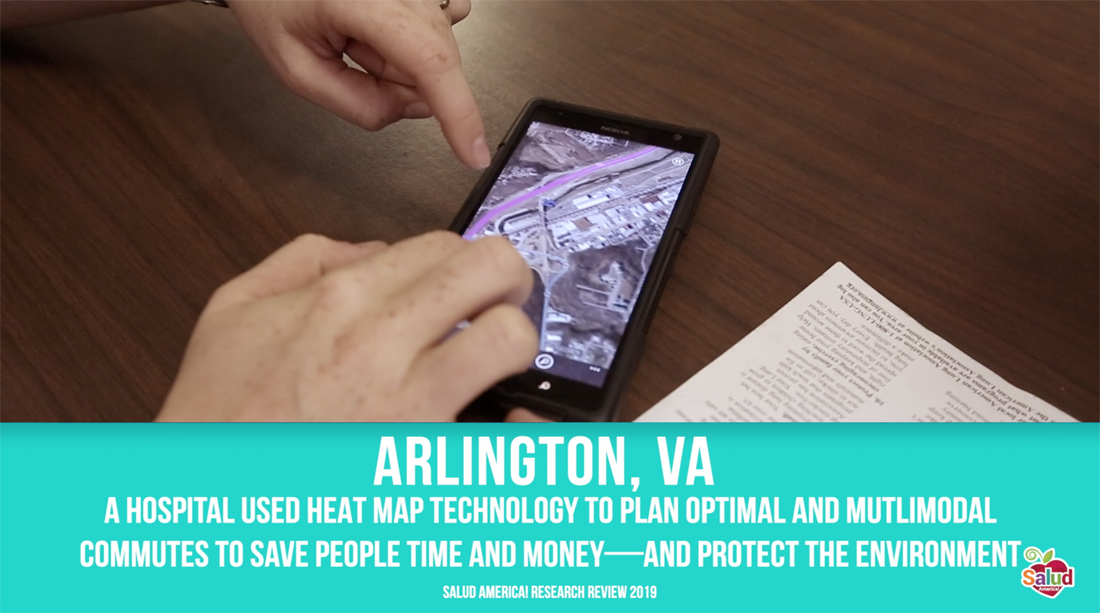 Better support for the informal transportation networks that exist in low-income communities, such as carpooling organized by employers. For example, for workers at Virginia Hospital Center in Arlington, heat map technology called Modeify plans optimal commutes in hopes of saving people time and money─while increasing use of multimodal transportation options that are good for health and the environment [48].
Better support for the informal transportation networks that exist in low-income communities, such as carpooling organized by employers. For example, for workers at Virginia Hospital Center in Arlington, heat map technology called Modeify plans optimal commutes in hopes of saving people time and money─while increasing use of multimodal transportation options that are good for health and the environment [48].
Policymaker-driven transportation improvement initiatives that go before public vote and can increase funding for public transit. During the 2018 midterm election cycle, U.S. voters passed 80% of public transportation ballot measures. For example, Broward County, Florida (29.7% Latino), voters approved a one-cent increase in the sales tax, for a 30-year period. The sales tax is expected to raise $357 million in the first year and $16 billion dollars over the next 30 years to fund transportation projects, like electric buses, light rail, bike lanes, sidewalks and improvements to intersections. Broward County commissioners will create a nine-member oversight board to determine how the county will spend the funds, according to Broward County [49].
The Power of Community Activism for Transit Improvement
Community activism will be central to overcoming the transportation barriers faced by Latinos in the U.S. Examples of initiatives that have worked highlight the importance of linking multiple sectors across the community whose ultimate goals are to address the social determinants of health through racial and economic equity [5, 15].
One such example is the Ticket to Opportunity initiative, organized by IndyCAN, a multiracial, nonpartisan organization in central Indiana, to mitigate the effects of inadequate transit as a barrier to employment opportunities. The goal of this initiative was to pass a regional transit expansion referendum to triple bus service in Indianapolis, to fuel economic development, and to increase job access threefold for low-income communities.
Importantly, Ticket to Opportunity created dialogue with 80,000 marginalized voters of color and partnered them with faith-based organizations, businesses, government, and community leaders to build sustained capacity for achieving transit equity [5]. Again, an emphasis on cross-sector partnerships and bottom-up activism led to sustained change and improved transit accessibility in this low-income, multicultural community.
Quick links from our Research Review »
More from our Research Review »
- Executive Summary
- Introduction & Methods: Latino Housing, Transportation, and Green Space
- Research: Latino Families Burdened by Housing Costs, Eviction
- Research: Latino Rural Migration Led to Housing, Transportation Inequities
- Research: Latinos Face Big Public Transportation Challenges
- Research: Latino Communities Lack Accessible Green Space
- Strategy: How to Increase Affordable Housing in Latino Communities
- Strategy: How Transit-Oriented Development Benefit Latinos
- Strategy: Improve Public Transit to Improve Latino Quality of Life
- Strategy: Green Space Projects Can Boost Latino Health
- Strategy: Latino Community Involvement Can Spur Environmental Justice
- Policy Implications: Latino Housing, Transportation, and Green Space
- Future Research Needs: Latino Housing, Transportation, and Green Space
References for this section »
5. National Academies of Sciences, E. (2017). Communities in Action: Pathways to Health Equity. doi:10.17226/24624
9. Williams, E. (2014). Transportation Dilemmas Facing Low-Income Latinos in Massachusetts Transportation Research Board. Transportation Dilemmas Facing Low-Income Latinos in Massachusetts Transportation Research Board.
15. Greenfield, J. (2016). For Latino activists, transportation justice means factoring in immigration and gentrification. Chicagoreader.com. Retrieved from https://www.chicagoreader.com/chicago/latino-activists-transportation-justice-concerns/Content?oid=24259928
41. Barajas, J. M., Chatman, D. G., & Agrawal, A. W. (2015). Exploring Bicycle and Public Transit Use by Low-Income Latino Immigrants: A Mixed-Methods Study in the San Francisco Bay Area, 89.
42. Tomer, A. (2012). Where the Jobs Are: Employers Access to Labor By Transit. Brookings. Retrieved from https://www.brookings.edu/wp-content/uploads/2016/06/11-transit-labor-tomer-full-paper.pdf
46. Manaugh, K., Badami, M. G., & El-Geneidy, A. M. (2015). Integrating Social Equity Into Urban Transportation Planning: A Critical Evaluation of Equity Objectives and Measures in Transportation Plans in North America. Transport Policy, 37, 167–176.
47. Amanda Merck. (2019, February 21). 6 Ways to Advance Equity in Public Transportation. Salud America. Retrieved May 1, 2019, from https://salud-america.org/6-ways-to-advance-equity-in-public-transportation/
48. Amanda Merck. (2018, July 2). Heat Maps Help Hospital Workers Find Best Multimodal Commutes. Salud America. Retrieved May 1, 2019, from https://salud-america.org/heat-maps-help-hospital-workers-find-best-multimodal-commutes/
49. Amanda, M. (2018, November 9). The Midterms: Voters Approve Big Public Transit Improvements. Salud America. Retrieved April 30, 2019, from https://salud-america.org/the-midterms-voters-approve-big-public-transit-improvements/
Explore More:
Transportation & MobilityBy The Numbers
27
percent
of Latinos rely on public transit (compared to 14% of whites).


